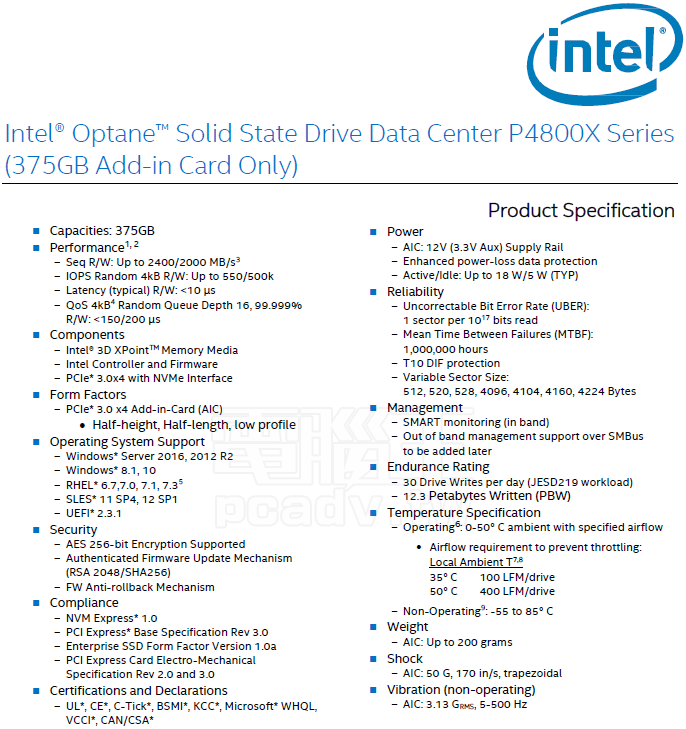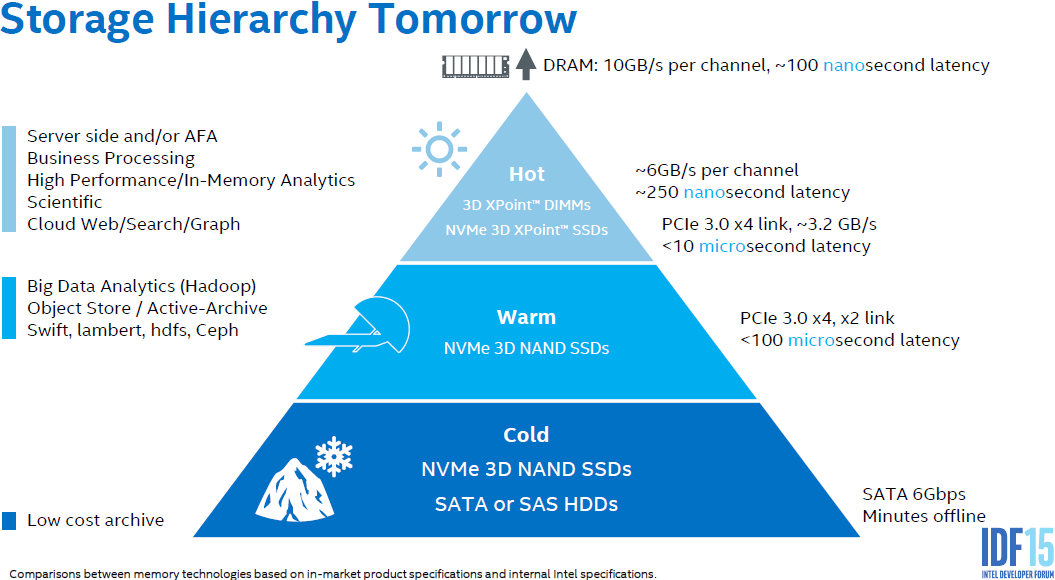Shintai
Supreme [H]ardness
- Joined
- Jul 1, 2016
- Messages
- 5,678

Follow along with the video below to see how to install our site as a web app on your home screen.
Note: This feature may not be available in some browsers.


these also don't come with as many channels and as beef as a CPU as they could and they also are still 4x for some odd reason. Planned generational upgrades?The P4800X is interface limited in IOPS and access time is quite lower.
There is also much less extra provisioned. The P3700 got 17, but the product it replaces got only 3. So that's 10x in endurance there.
Allyn Malventano at pcper.com has tested a P4800X AIC remotely here:
https://www.pcper.com/reviews/Storage/Intel-Optane-SSD-DC-P4800X-375GB-Review-Enterprise-3D-XPoint
As soon as regular folks can get one, people will put one in their ssd systems and try for a 5 second boot time. Wonder if that will satisfy "my computer is soooo slow to boot up".
a lot of program and OS limitations are single thread limits due to coding.Doubtful.
edit rant: We just upgraded all our users to SSDs and 8GB of ram and still get "my computer is so slow" from them.... These things boot in less than 20 seconds and have zero process time when opening new applications even with 15 things open... I don't understand it.
indeed but for me all i care about are those 4K and less QD1 speeds. They are epic!I want to see one with a PCIe 3.0 8x interface. They're hitting the 4x bottleneck so early.
according to intel PCIe interface has a lot of overhead.We did a very rough comparison of bandwidth and latency recently:
transmitting one 4K IOP over an x4 PCIe 3.0 interface takes about 1 us (one microsecond):
8 GHz / 8.125 bits per byte @ x4 PCIe 3.0 lanes = 3,938,462,000 bytes per second
4,096 / 3,938,462,000 ~= 4 / 4,000,000 = 1/1,000,000 second
The stated latency of this P4800X is 10 us (ten microseconds).
Thus, an x8 interface should transmit one 4K IOP
about twice as fast, or in 0.5 us (one-half microsecond).
Look at it this way: you're a football Quarterback at Spring Training,
and it takes you 10 seconds to locate your favorite football in a storage locker,
and it takes you 1 second to pass that football to your favorite receiver.
Even if you can throw a perfect pass in one-half of a second,
it still took you 10 full seconds to locate that football in the storage locker.

thats my hope that they design either DIMMs to accept it in a new standard or great a new interface with lower overhead.Thanks! I believe Allyn Malventano's review of the P4800X has a graph
showing the relative percentages of several elements of aggregate overhead.
As far as Optane mounted on the DDR4 DIMM form factor,
I would LUV to see another triple-channel architecture with
one of those channels dedicated to Optane DIMMs.
The regular DIMM channels could still operate in
quad-channel mode:
6 DIMM slots total:
4 for DDR4 DIMMs in quad-channel mode
2 for NVDIMMs w/ Optane hosting the OS.

My hope is since these XPoint DIMMs will be so fast we can start using next gen file systems like ReFS. ReFS sucks for main drive because it is slow on current tech but on XPoint it should be fast enough to compensate for the file-system overhead.Over at pcper.com, Allyn and I have been bouncing around the kinds of changes
that will be needed to dedicate 2 out of a total of 6 DIMM slots to Optane-like
non-volatile DRAM.
Done properly, the BIOS / UEFI subsystem should allow
those 2 DIMM slots to be formatted as a standard NTFS partition before
doing a fresh OS install. That OS installation procedure will then detect that
memory in exactly the same manner in which it now detects a JBOD SSD,
or RAID array, for hosting the OS.
That enhancement to BIOS / UEFI subsystems should not be too difficult.
Many of us DIY enthusiasts are already doing a very similar thing now
with a RAID-0 array of 2x or 4x Nand Flash SSDs, ~50-64 GB formatted as C: and
the remainder formatted as the E: drive letter (assuming optical drive is D: ).
As such, the dual-channel Optane DIMMs will have the extra benefits
of DRAM bandwidth, in addition to all of Optane's other benefits; and,
this development should be implemented without requiring any
changes to existing OS software i.e. so it's "transparent" to
normal OS installation procedures.
There may be a problem if the sysadmin wants to overclock the
standard quad-channel DRAM, but the dual-channel Optane DIMMs
cannot clock quite as fast. We would need to ask Intel and AMD if
their on-chip memory controllers can clock simultaneously at
2 different speeds (something to consider for the future).
I suspect that current Intel and AMD CPUs do NOT have such a
capability, but this is certainly something that is on this side
of the visible horizon.
Doubtful.
edit rant: We just upgraded all our users to SSDs and 8GB of ram and still get "my computer is so slow" from them.... These things boot in less than 20 seconds and have zero process time when opening new applications even with 15 things open... I don't understand it.